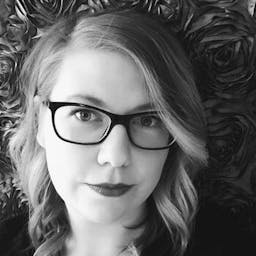CMHC and Mortgage Default Insurance: The Secret No One is Telling You
By Heidi Unrau | Published on 20 Jul 2023

Becoming a homeowner for the first time is a rite of passage into adulthood. It is an incredibly exciting stage in life. But it can also be incredibly overwhelming. One thing is for sure, you need a downpayment. But how much? And can you afford it? Thanks to the Canadian Mortgage and Housing Corporation (CMHC), first-time homebuyers can grab their piece of the real estate pie with as little as 5% down.
That’s an incredible deal. But here’s the catch, homebuyers who cannot afford a traditional 20% down payment must qualify for mortgage default insurance. That’s where CMHC comes in. So who is CHMC and what is mortgage default insurance? We’ll tell you everything you need to know about CMHC, mortgage default insurance, and the secret cost no one is talking about.
Who is CMHC?
The history of CMHC dates back as far as 1940. Originally named the Wartime Housing Corporation, its primary function was to help veterans returning from war to secure affordable housing. By 1946, the Central Mortgage and Housing Corporation was created to replace the Wartime Housing Corporation. By 1979, the name was changed to the Canadian Mortgage and Housing Corporation (CMHC). Its current mandate is to help Canadians access a wide choice of quality homes at an affordable price. CMHC works to help Canadians who cannot afford housing in the private market.
What is Mortgage Default Insurance?
In Canada, you can purchase a house with as little as 5% down. That’s a far cry from the traditional 20% down payment required for a conventional mortgage. According to CBC, the average cost of a home in Canada is a whopping $688,000. That translates to a 20% down payment of $138,000. If you don’t put down 20% of the purchase price, it becomes a high ratio mortgage and it can only be amortized to a maximum of 25 years, rather than 30 for conventional mortgages. For many Canadians, saving up a six-figure downpayment is just not possible.
CMHC allows you to put down 5% by providing mortgage default insurance to your mortgage lender. Mortgage default insurance is an insurance policy that protects your lender against financial loss in the event you cannot make your mortgage payments and go into default. Because it is an insurance policy, it comes at a cost in the form of premiums, just like any other type of insurance policy. Of course, your lender doesn’t want to pay for those premiums so they pass the cost on to you. The total cost of those premiums are added to your mortgage balance.
How Do I Qualify For Mortgage Default Insurance?
In order to qualify for mortgage default insurance through CMHC you need to meet the following requirements:
- The purchase price of the home must be below $1,000,000
- You must provide a down payment of no less than 5% on the first $500,000 of the purchase price, then 10% on the remaining purchase price
- The downpayment cannot be a loan
- You must pass the mortgage stress test
In order to qualify for a CMHC mortgage, you must pass the mortgage stress test. This is a calculation that measures your ability to pay a hypothetical higher mortgage payment in the event mortgage interest rates rise. Your ability to handle that payment is based on two different measurements known as your Gross Debt Service and your Total Debt Service.
Gross Debt Service measures your gross monthly housing costs such as your mortgage payment, property insurance, property taxes, and utilities. All of those costs are calculated as a ratio against your total gross monthly income. Your housing-related costs should not exceed 32% of your gross monthly income.
Total Debt Service adds your total housing-related costs to the total of all your other monthly debt payment obligations such as car and student loans, credit card and lines of credit payments, etc. Your total monthly housing costs and debt obligations are calculated as a ratio against your total monthly income. Your total debt service should not exceed 40% of your gross monthly income.
If you fail the stress test, you cannot obtain mortgage default insurance through CMHC, nor will you be approved for a mortgage through a traditional, federally regulated lender like one of Canada’s big 6 banks. However, for those that do not meet conventional qualification requirements, there are alternative lenders who will finance subprime borrowers. Also, there are alternative mortgage default insurance providers who will insure borrowers who do not meet CHMC standards.
Who Provides Mortgage Default Insurance?
In the mortgage industry, the term CMHC is so pervasive it’s become a catchall for mortgage default insurance. But CMHC is not the only entity helping Canadians access the real estate market. There are two other default mortgage insurance providers:
Sagen
Formerly known as Genworth Financial, they are actually Canada’s largest privately owned mortgage default insurer, not CMHC. But just like CMHC, they partner with lending institutions to provide mortgage default insurance for high ratio mortgage borrowers. However, they do offer lenders mortgage default insurance for subprime borrowers who do not meet CMHC qualification requirements.
Canada Guaranty
This Canadian-owned, privately held corporation provides much of the same products and services as Sagen™. They’ve partner with large private investors and alternative lenders to offer mortgage default insurance and out-of-the-box lending products to help subprime borrowers access homeownership.
How is Mortgage Default Insurance Calculated?
Calculating how much default insurance you require is a fairly simple equation. It is calculated as a percentage of your mortgage loan, known as the loan-to-value (LTV), and the size of your down payment. That means if your down payment is only 5%, your LTV is 95%. Your lender has to finance 95% of the purchase price of your home. Let’s break it down with an example:
You want to purchase a house listed for $688,000. Under current CMHC rules, you would have to provide a minimum down payment of 5% on the first $500,000 and 10% on the rest. But for the sake of simplicity, we will use a 5% down payment in this example. That’s a total down payment of $34,400. Your down payment is subtracted from the purchase price of the property to determine how much your lender needs to finance.
5% x $688,000 = $34,400
$688,000 – $34,400 = $653,600
$653,600 is the remaining purchase price that your lender needs to finance in the form of a mortgage loan. This is how much they would lose if you were to default on your mortgage payments and they had to take possession of the house, a process known as foreclosure. So they tell CMHC they need enough mortgage default insurance to cover a loss of $653,600.
All three mortgage default insurers listed above charge premiums as a percentage of the total mortgage amount. The lower your down payment, the higher the mortgage balance, and the higher your insurance premiums will be. Assuming you have chosen to amortize your mortgage over the maximum 25 year period allowed, the premium calculation will look like this:
$653,600 x Premium Rate (%) = Total Cost of Premiums
How Much Does Mortgage Default Insurance Cost?
All federally regulated financial institutions fall under the purview of the Office of the Superintendent of Financial Institutions (OSFI) which oversees and requires those institutions to operate within a strict regulatory framework. Because of this, all three mortgage default insurance providers charge the exact same premiums using the exact same pricing matrix.
Most of the time, it’s best for consumers when entities compete with each other to offer the lowest possible price. But in this context, there’s a balance between providing appropriate coverage to lenders while ensuring borrowers are not overcharged on premiums.
CMHC, Sagen, and Canada Guaranty follow this price matrix:
| Loan To Value | Premium on Total Loan |
| Up to 65% | 0.06 % |
| Up to 75% | 1.7 % |
| Up to 80% | 2.4 % |
| Up to 85% | 2.8 % |
| Up to 90% | 3.1 % |
| Up to 95% | 4.0 % |
Continuing with our example of purchasing a $688,000 property with a 5% down payment of $34,400 your lender will have to finance 95% of the purchase price of your house.
According to the above price matrix, you will be charged premiums equal to 4.0% of the total amount financed by your lender. Let’s look at the equation:
Amount of Mortgage Default Insurance Required
$688,000 – $34,400 = $653,600
Total Cost of Mortgage Default Premiums
$653,600 x 4% = $26,144
$653,600 + $26,144 = $679,744
That means $26,144 of mortgage default insurance premiums will be added to your mortgage balance. Now you owe $679,744. Your mortgage payment will be based on that $679,744 and since the premiums are added to your total mortgage balance owing, they are subject to mortgage interest rate charges.
Let’s look at how much you would have saved if you had made a 10% down payment instead. That drops your loan to value down to 90%. According to the mortgage default premium price matrix, you will be charged significantly less at just 3.1%
Amount of Mortgage Default Insurance Required
$688,000 – $68,800 = $619,200
Total Cost of Mortgage Default Premiums
$619,200 x 3.1% = $19,195
$619,200 + $19,195 = $638,395
By increasing your down payment from 5% to 10%, you saved yourself almost $7,000 in premium costs.
The Hidden Cost of Mortgage Default Insurance
But premiums aren’t only the only cost of mortgage default insurance. Remember, those premiums are added to your mortgage balance and are subject to mortgage interest rate charges. For simplicity sake, let’s assume your mortgage interest rate is 3.25% and never changes over the amortization period of 25 years:
Premiums with a 5% down payment (95% Loan to Value) = 4.0%
$653,600 x 4% = $26,144
$26,144 x 3.25% x 25 years = $12,077
Over the 25 year amortization period, that $26,144 of mortgage default insurance premiums will cost you over $12,000 of pure interest. That brings the total cost of premiums up to $38,144.
Now, let’s take a look at what your mortgage default insurance premiums will cost if you provide a 10% down payment, bringing your loan to value down to 90%.
Premiums with a 10% down payment (90% Loan to Value) = 3.1%
$619,200 x 3.1% = $19,195
$19,195 x 3.25% x 25 years = $8,870
Over the 25 year amortization period, that $19,195 of mortgage default insurance premiums will cost you $8,870 of pure interest. That brings the total cost of premiums up to $28,065. By providing a slightly higher down payment of 10% instead of 5%, you saved yourself a total of $10,079.
Conclusion
In today’s housing market, many Canadians are facing traditional down payments in the hundreds of thousands of dollars in order to qualify for that holy grail conventional mortgage. But that’s just not achievable for millions of people, pushing the dream of homeownership further into the realm of fantasy.
CMHC, and the other two mortgage default insurance providers, are filling the gap for honest, hardworking Canadians every day. But is mortgage default insurance really the antidote we think it is? CBC reported that the average price of a house in Canada currently sits at $688,000. How long would it take you to save a six-figure down payment? I couldn’t do it, and I work in finance.
It’s tempting to thinking of CMHC and mortgage default insurance as divine intervention, holding back the forces of outrageously high real estate prices. But is it worth the cost? More importantly, has anyone even told you about it? Understanding the hidden cost of mortgage default insurance will ensure you are making an informed decision that’s right for you, even if it means continuing to rent.
